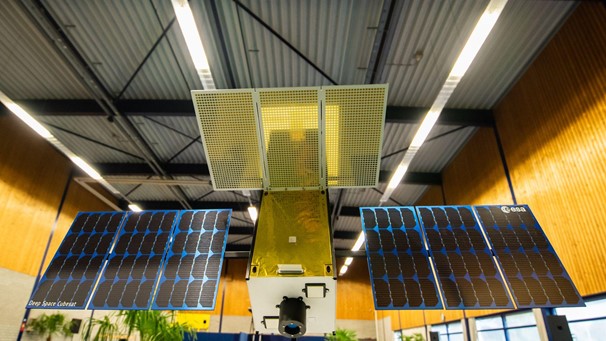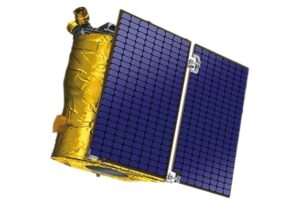How CubeSat Camera Has Revolutionized Space Exploration and Scientific Research

CubeSats, compact satellites with fixed scalable dimensions, emerged as an educational project back in the early 2000s. However, in just two decades, these miniature satellites have gone a very long way. Thanks to their affordable cost, easily scalable design, and overall space tech miniaturisation, a typical CubeSat can now accomplish many advanced tasks no one even thought of at the technology’s origin.
However, the CubeSat camera remains the primary tool these small satellites use, which is pretty much the same for larger spacecraft. Most data we get from space comes in the form of images, so below, we will discuss CubeSat camera uses, current applications, and future potential.
What can the CubeSats camera be used for?
CubeSat technology, originally designed for budget education missions, can now cope with a wide range of scientific and commercial tasks. Most often, CubeSat cameras are used for:
- Earth observation: depending on CubeSat camera resolution, spacecraft can capture high-, medium-, or low-resolution images of our planet’s surface. Higher resolution means a higher level of detail but a lower coverage area. CubeSat cameras for Earth observation typically capture pictures in medium and low resolution.
- Monitoring space weather: solar flares and cosmic rays may interfere with ground-based tech, like power grids, but CubeSat cameras equipped with relevant sensors can monitor space weather phenomena and send timely alerts.
- Astronomical observation: thanks to their affordable cost, CubeSats are actively used in scientific missions, which was their original purpose. Today, however, a CubeSat camera system has grown more advanced, so modern spacecraft can study cosmic microwave background, take pictures of distant bodies, and even search for exoplanets!
- Tracking space debris: international agencies are growing increasingly concerned about space debris accumulating in our orbit, so they regularly introduce new initiatives for monitoring this debris — often, with CubeSat technology.
- Technology demonstration: as of late, international space agencies started using CubeSats for technology demonstration, including initiatives on capturing and removing space debris. Once again, CubeSat cameras play a vital role in these missions, acting as ‘eyes on the spot,’ and transmitting visual data back to ground stations.
What types of CubeSat cameras exist now?

Considering such a vast range of applications, CubeSat camera designs should be tailored for each specific mission. However, one should not forget that CubeSats are very small satellites, which is both their primary benefit and chief limitation. These satellites are measured in standard units, with 1U size standing for a 10x10x10 cm spacecraft. Today, a typical CubeSat can be scaled up to 16U in size, but that’s it so far.
On the other hand, modern technology constantly loses in size while adding in features, and CubeSat cameras are not an exception. Today, these spacecraft can carry almost the same imagers as larger satellites. Typically, this includes:
- Optical cameras: these are practically the same optical cameras we use on Earth that focus light on a lens (or a sensor) to capture images. In the case of CubeSat tech, however, it’s possible to create images in high and low resolution, depending on mission goals.
- Infrared cameras: also called thermal, these cameras capture infrared radiation emitted from hot surfaces. These data allow scientists to track wildfires on Earth or analyze temperatures (and often, composition) of other celestial bodies.
- Multispectral and hyperspectral cameras: besides visible light, CubeSat cameras can react to other wavelengths beyond our perception. Multispectral cameras can capture up to ten different bandwidths, while hyperspectral imagers are way more advanced and are tuned up to 100 wavelengths. These imagers ensure accurate agricultural forecasts, help search for mineral sites, and are used in advanced environmental studies.
- Radiometric cameras: these imagers can also work across different spectral bands, but their primary purpose is to measure radiation intensity. Later, this data is used to study atmospheric phenomena, analyze CO2 concentrations in our planet’s atmosphere, or investigate the effects of solar flares on our planet.
Why is the CubeSat camera important for science?
CubeSats emerged as a university project, but their compact size and affordable cost have already revolutionized scientific research and commercial applications of the technology. These small satellites are the first to have scalable designs, which alleviates mass production of CubeSats and their components. As a result, technology becomes ever more affordable, which in turn, makes it available to research institutions without massive budgets.
CubeSat uniform design also accelerated development and deployment cycles, ensuring quick access to space and its data. But perhaps the biggest benefit of CubeSat camera technology is that it stimulates scientific collaboration on a global scale — not only in developed but also in developing countries. And we all know that more human talent ‘onboard’ is the key driver of innovation.
Finally, considering the rapid evolution of CubeSat cameras and their uses, this technology may soon expand its range of potential applications. But even today, the CubeSat potential is very impressive, especially if we consider this tech’s humble beginnings. So, there is every reason to believe that these miniature spacecraft may yet surprise us!



